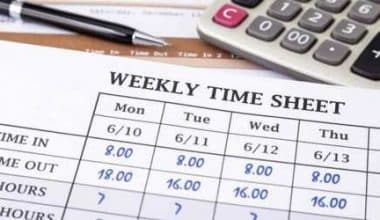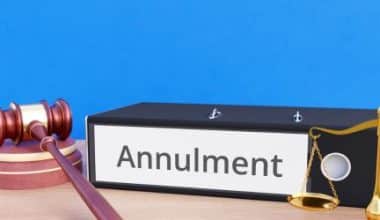Purchasing a home is likely to be one of the largest investments you’ll ever make, and you’ll want to do everything you can to ensure it’s as comfortable and up-to-date as possible. However, saving enough money to complete home renovations and repairs can be difficult. A cash-out refinance could be the solution. It can help you achieve your home improvement goals without relying on credit cards, personal loans, or a second mortgage. This article will walk you through the ins and outs of what it is about, its rates, refinance cashout vs home equity loans, and HELOC vs refinance cashout, including other basic facts you need to know.
What is a Refinance Cashout?
Before asking what a refinance cashout is, just know that you should gain equity in your home as your mortgage matures. The amount of a home’s value that you have actually paid off is referred to as equity. There are two ways to gain equity:
- The value of your home rises.
- Your monthly mortgage payments are used to pay down your mortgage principal. Every time you make a loan payment, you increase the amount of equity in your home.
A cashout refinance is a type of mortgage refinance that takes advantage of your equity and pays you to cash in exchange for taking on a larger mortgage. In other words, a cash-out refinance allows you to borrow more than your mortgage balance and keep the difference.
A cashout refinance, unlike a second mortgage, does not add another monthly payment to your list of bills; instead, you pay off your old mortgage and replace it with the new mortgage.
Example of a Cashout Refinance:
Assume you paid $60,000 toward the purchase of a $200,000 home. This implies that you still owe $140,000 on your house. Let’s also say you want to spend $20,000 on renovations.
With a cash-out refinance, you take a portion of your equity and apply it to your new mortgage principal. This means your new mortgage would be worth $160,000, which includes the original $140,000 you owed on the house plus the $20,000 you need for renovations. A few days after closing, your lender will give you the $20,000 in cash.
How does a Cash-Out Refinance Work?
A cashout refinance requires a little more work than a regular refinance. In most cases, you’ll take the following steps to convert the equity in your home to cash:
#1. Confirm that you can afford the loan.
Because you’re taking out a larger loan than you currently have, lenders will look over your income, assets, and credit to make sure you can afford your new monthly payment. A cash-out refi will usually increase your monthly payment, but in some cases, if interest rates have dropped significantly since your first loan, you may end up with lower mortgage payments.
#2. Estimate the value of your home
A home appraisal is usually required to confirm the value of your home. A real estate appraiser will assess the value of your home by comparing it to recently sold homes in your area with similar features.
You may be able to refinance without an appraisal if you already have a government-backed loan. A streamlined refinance loan would be used if your current loan is an FHA or USDA loan. Look into an interest rate reduction refinance loan if you have a VA loan (IRRRL).
#3. Check the maximum you can borrow
Lenders typically allow you to borrow up to 80% of the value of your home. This is also known as your maximum loan-to-value (LTV) ratio because it determines how much of your home’s value is borrowed. However, eligible military borrowers may be able to access up to 90% of the value of their home through a VA cash-out refi.
#4. Finalize your cash-out amount
Your total cash out will be calculated by subtracting your current mortgage balance and any closing costs from the loan amount.
Reasons To Consider A Cash-Out Refinance
A cashout refinance can offer several financial benefits and may be preferable to obtaining a personal loan or second mortgage. Here are some reasons why you should consider a cash-out refinance.
#1. Fund Home Improvements And Renovations
Upgrades are frequently required, from questionable design choices to a broken HVAC system. A cashout refinance allows you to use your existing equity to fund home improvements and renovations that can increase the value of your home. You may be able to get a lower interest rate on your refinanced mortgage than you would on a credit card, which will save you money on interest payments.
#2. Consolidate Debt
A cashout refinance can provide you with the funds you need to pay off your debts and consolidate your debts into a single, lower-interest payment. You can use the funds to pay off as many high-interest debts as you have available funds for. This will reduce the amount of interest you pay each month and may potentially free up money to help you pay down debts that aren’t part of your consolidation or pay off your mortgage faster.
#3. Reduce Your Interest Rate
If you charge an unexpected bill to a variable-rate credit card, you may be charged a high-interest rate – the prime rate, which is tied to the Federal Reserve’s federal funds rate, plus a certain number of percentage points on top of that. Worse, that interest rate is always subject to future increases. Mortgage and cashout refinance rates are typically lower – often significantly lower – than credit card interest rates. If your home has enough equity to cover your bill, you could save thousands of dollars in interest over time.
#4. Free Up Money To Invest
When you consider the power of compounding interest, it can be a wise decision to free up money and start saving for retirement sooner rather than later. Cash-out refinances provide you with funds that you can use to supplement your retirement savings or build a college fund.
Refinance Cashout Rates
A cash-out refinance will typically have a slightly higher interest rate than other loans because lenders consider an equity-tapping refinance to be riskier than a regular refinance. There are four major factors that influence the cashout to refinance rates you’ll receive:
- Your credit scores. Although lenders raise rates on cashout refinances for everyone, a low credit score will also have a significant impact on how high your rate is. A credit score of 760 will get you the best rate, while a score of 620 may result in a rate that is more than 1.5 percentage points higher.
- Your LTV ratio. The higher your LTV ratio, the riskier your loan is deemed to be, and thus the higher your interest rate.
- Your property’s type. You’ll have to pay more to access the equity in a two-to-four-unit property or a condominium.
- Your occupancy. For second homes and investment properties, lenders charge higher cashout refinance rates.
Cashout Refinance Vs. Home Equity Loans
There are significant differences between cashout refinancing vs home equity loans when it comes to capitalizing on the value of your home. A cashout refinance replaces your existing mortgage with a larger loan amount, whereas home equity loans vs lines of credit are mortgages in their own right. As a result, Refinance Cashout Vs Home Equity Loans cannot be directly compared.
When deciding between a home equity loan vs. a refinance, one way to determine which is best for you is to compare interest rates. Cashout refinancing, if you qualify, typically offers lower interest rates but may have higher closing costs. You should also consider any potential refinance tax deductions that you may be eligible for.
HELOC Vs Refinance Cashout
A home equity line of credit (HELOC) works similarly to a credit card in that you can borrow up to a predetermined maximum amount as needed. The draw period, during which you can access the money, typically lasts 10 years, and you may only pay interest on the borrowed funds during this time. The credit line is secured by your home equity, and you will repay it when the draw period expires. The repayment period is often quite long — around 20 years in many cases.
A HELOC Makes Sense if: You have a relatively high credit score, you don’t need full access to the funds all at once, or you want an interest-only period.
A Cash-out Refinance Makes Sense if: You want the lowest monthly payment possible, you have poor credit, or you require a consistent monthly payment that will not fluctuate.
Cash-Out Refinance Requirements
You must meet lender requirements in order to get a cash-out refi. These can differ, and it’s always a good idea to shop around for the best interest rate. However, you will almost certainly need to meet the following requirements:
#1. Debt-to-income ratio, or DTI.
Your DTI is calculated by dividing your monthly debt payments (including your current mortgage) by your gross monthly income. A DTI of 40%-50% or less is usually required for a cash-out refi.
#2. Credit score.
A higher credit score, as expected, will help you get a better interest rate, but a 620 credit score may qualify you for a cashout refinance.
#3. Home equity.
A cashout refinance typically requires at least 20% equity in your home. In other words, you must have paid off at least 20% of the house’s current appraised value.
#4. Seasoning requirement.
To qualify for a cashout refinance with a conventional loan, you must have owned the home for at least six months, regardless of how much equity you have. If you inherited the property or it was otherwise legally awarded to you, lenders may make an exception.
Pros and Cons of a Cashout Refinance
Pros:
The cash-out equity can be used for any purpose. Whether you want to use the money to consolidate debt, invest in real estate, or do something else, your home equity can be used however you see fit.
When compared to other home equity financing options, you can expect a lower interest rate. Mortgages typically have lower interest rates than credit cards, personal loans, and home equity loans, allowing you to save more money each month.
Cons:
To qualify, you must have at least 20% equity. If home values in your area have fallen or you recently purchased your home with a small down payment, a cashout refinance may be out of the question right now.
You will lose some of the equity you have amassed. Borrowing against your home equity now means you’ll make less money when you sell it later.
Your monthly mortgage payment will be higher. In most cases, a larger loan amount will result in a higher monthly mortgage payment for the duration of your home’s ownership.
What does a Cash-Out Refinance do?
When you close your refinance loan, you will receive a lump sum. The loan proceeds are first applied to the repayment of your existing mortgage(s), including closing costs and any prepaid items (such as real estate taxes or homeowners insurance); any remaining funds are paid to you.
What is the Difference between Cash Out and Refinance?
A cashout refinance allows you to extract some of your home’s equity. The current loan is exchanged for one with better terms in a rate-and-term refinance. Because cash-out loans pose a higher risk to the lender, they usually come with additional fees, points, or a higher interest rate.
Is Refinancing with Cash Out a Good Idea?
For many people, cashout refinance is a good option because mortgage rates are rising. Nonetheless, because the collateral in a cash-out refinance is your home, lenders take on relatively little risk and can afford to keep cashout refinance rates low.
What are the Risks of Cash-Out Refinance?
The risks of a cash-out refinance include a higher interest rate, the need to pay closing costs, and a higher monthly payment.
What are the Disadvantages of a Cash-Out Refinance?
One disadvantage is that cash will not be provided immediately. If you need money quickly, a refinance may not be the best option. You must go through an approval, processing, and closing process that could take several weeks. Loan terms are subject to change.
Which Bank is best for Cash-Out Refinance?
You can use banks such as:
- Rocket Mortgage
- Caliber Home Loans.
- PenFed Credit Union
- SoFi
- Guaranteed Rate
- Veterans United
- Bank of America
- loanDepot
How much can you Borrow in a Cash-Out Refinance?
The amount you can borrow with a cash-out refinance is typically limited to 80% of the value of your home. This can, however, vary depending on the lender and loan type you select.
Do you pay Money back on a Cash-Out Refinance?
Be aware that the money you receive from cash-out refinances is not free money. It is a loan with interest that must be repaid. Even if you refinance at a lower interest rate, keep in mind that the refinance will lengthen the term of your loan and increase the total amount of interest paid.
Conclusion
Whether you want to pay off debt or renovate your kitchen, a cash-out refinance can be a powerful tool that provides you with the funds you need to move forward. This cashout refinance loans typically have lower interest rates than credit cards and no restrictions on how you can use the money.
Related Articles
- COST TO REFINANCE A MORTGAGE: All You Need to Know
- SECOND MORTGAGE: Definition, Rates and Requirements
- Cash out refinance loan explained (+ requirements and tools)
- HOW SOON CAN YOU REFINANCE A MORTGAGE IN 2023?
- MORTGAGE CREDIT SCORE: Minimum Credit Required To Buy A Home
- WHAT IS A BUSINESS ENTITY: What Is It, License & Requirements






